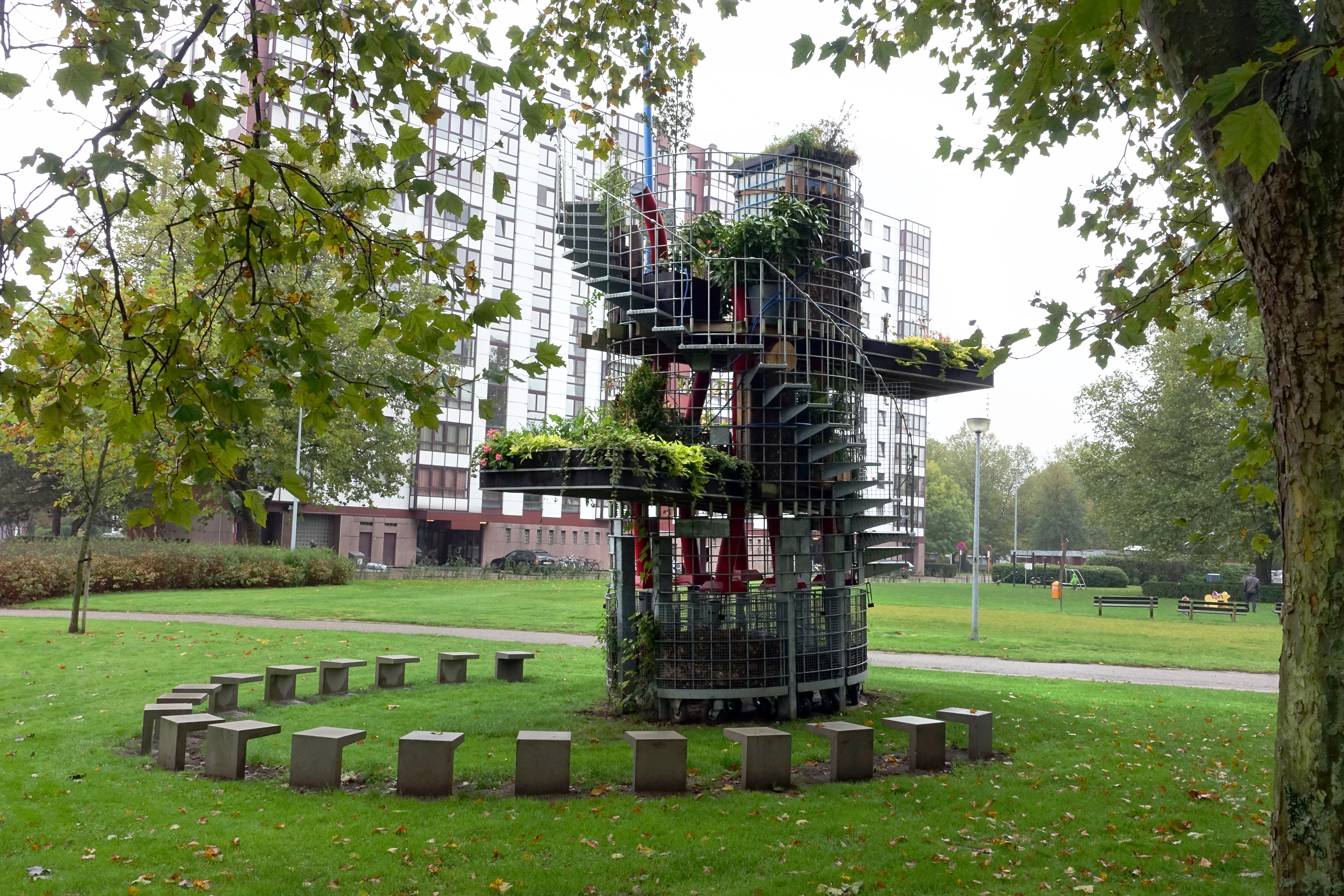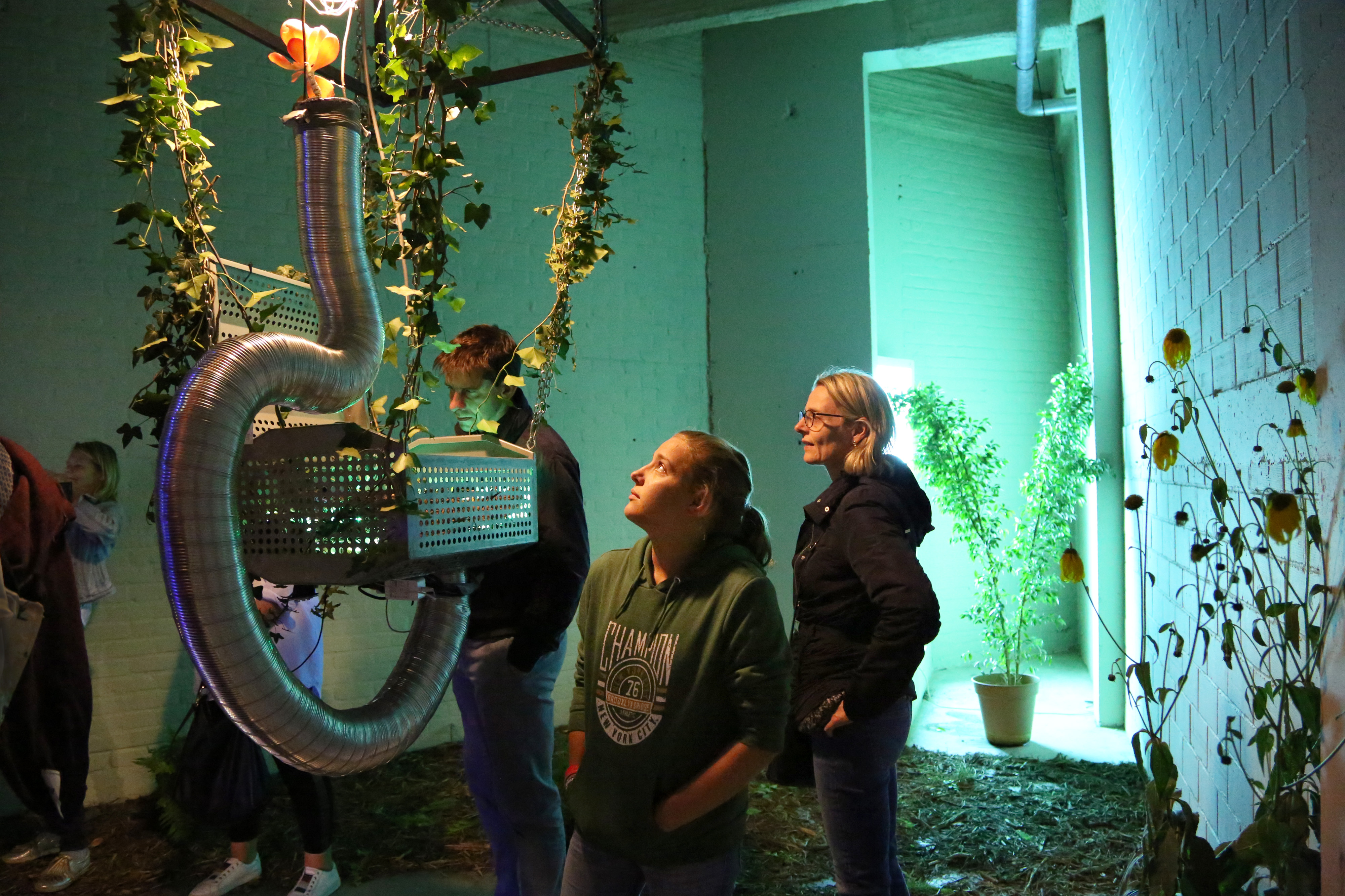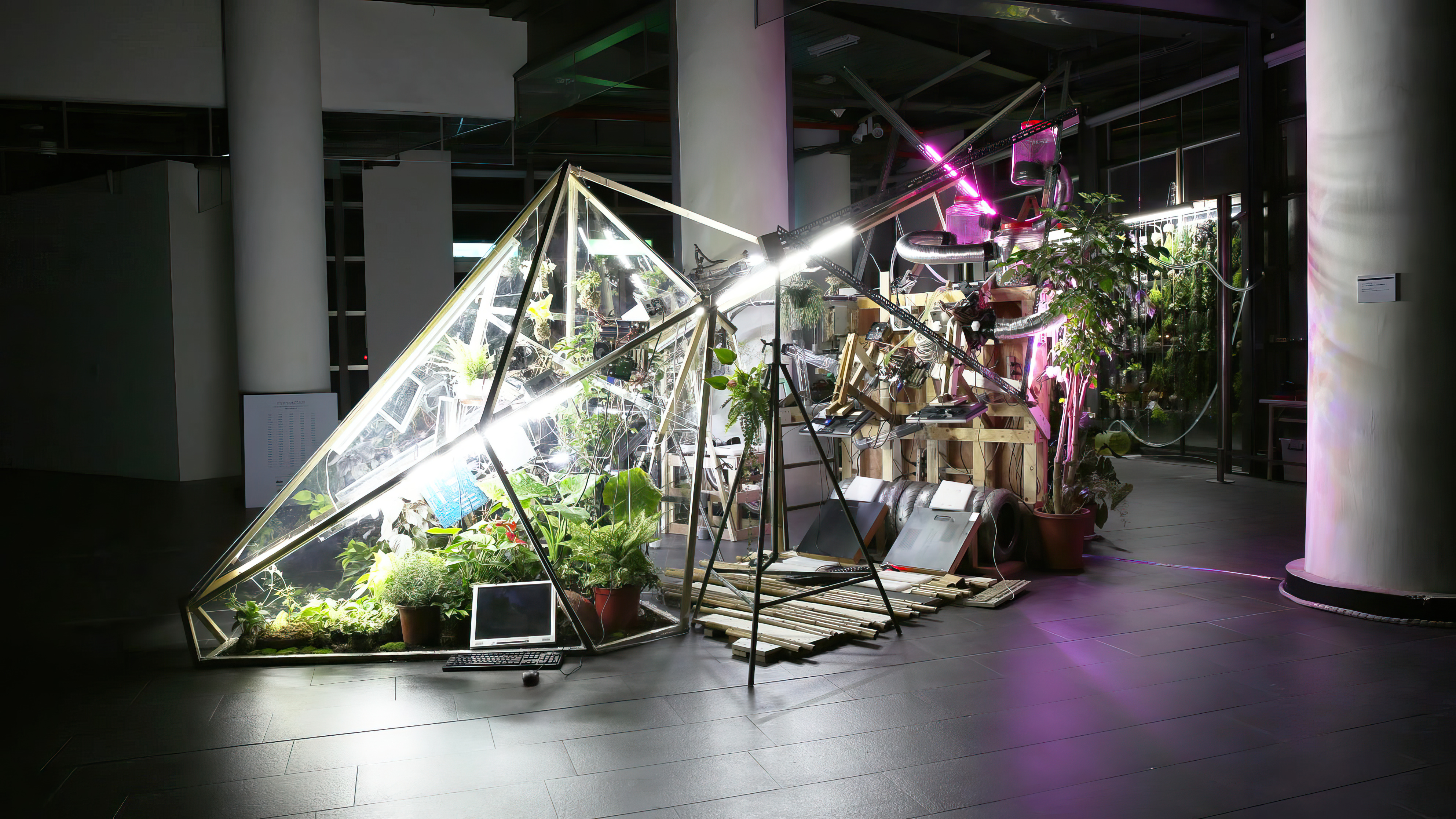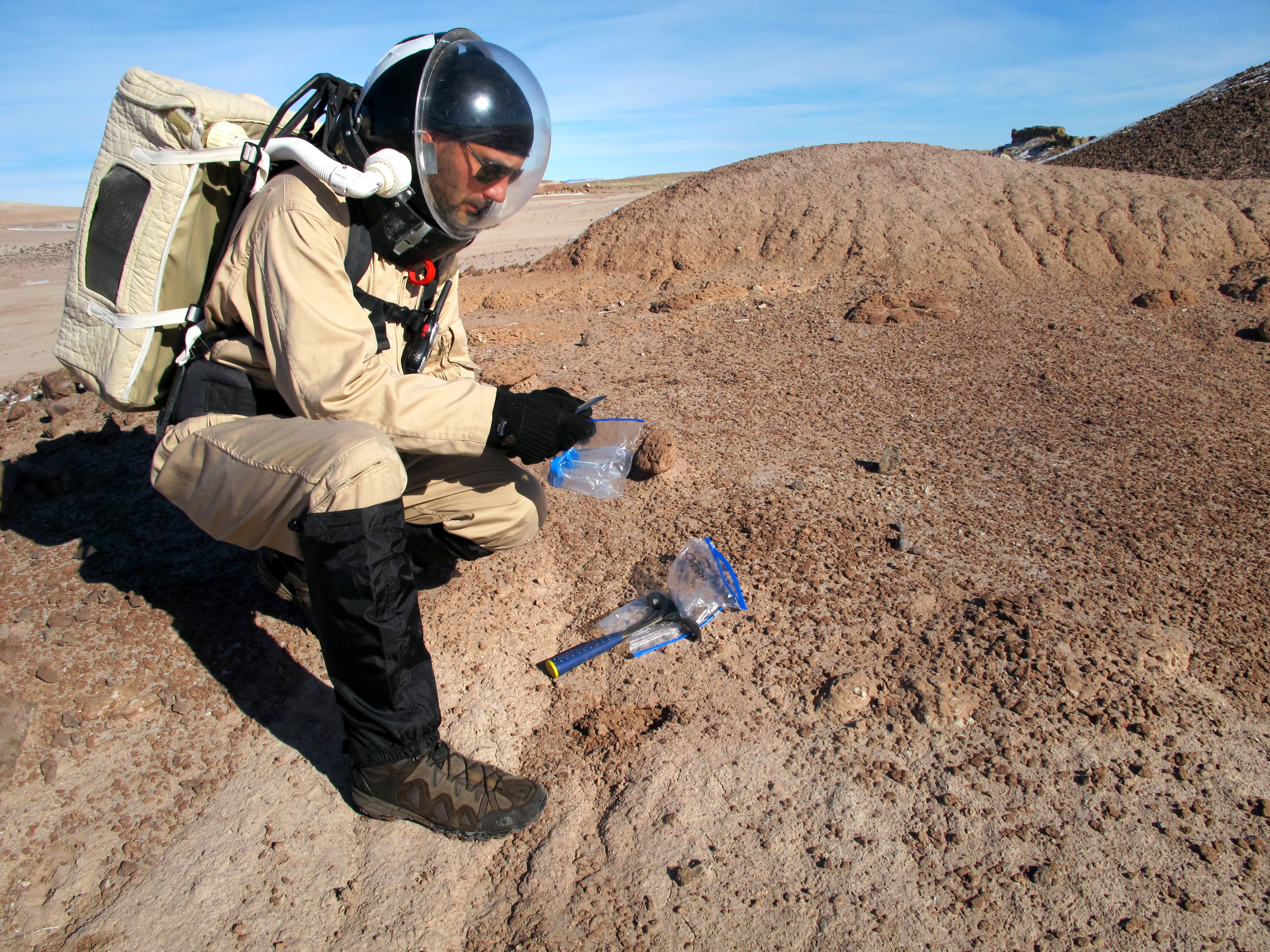Is it possible to study space systems, create art installations and be part of a space company?
When Angelo Vermeulen had to make a decision about his future career, he refused to put his interests in a box. He studied biology, co-funded a global transdisciplinary collective and is currently completing his second PhD, while being part of a young space company specialising in human reproduction in space.
Over the years, he embarked on various art projects with diverse collaborators, eventually forming a steadfast core team with whom he consistently collaborated. That was the moment they decided to create SEADS, a global network and cross-cultural collective of artists, scientists, engineers and activists focused on future’s literacy. The purpose behind SEADS is to develop tools on ways to reinvent the future.
“SEADS is about how people envision the future, which paradigms they use to shape their ideas and a way to question those paradigms, and if needed to decolonize our imagination and to reinvent it.” Angelo explained.
The project has a large arts portfolio with several art projects, academic research and hybrid projects, which are partly academic, partly artistic. SEADS aims to embrace transdisciplinary practices, where disciplines are feeding into each other and blend together.
 SEADS, Biomodd [BRG13], 2021. E-waste upcycling with project participants at the Saint John’s Hospital museum in Bruges, Belgium. Photo by Angelo Vermeulen.
SEADS, Biomodd [BRG13], 2021. E-waste upcycling with project participants at the Saint John’s Hospital museum in Bruges, Belgium. Photo by Angelo Vermeulen.
One of the first questions that came up while looking into Angelo’s work is the journey to reach such a diverse path. As he pointed out, his interests in art, science and technology have always been there but he made an active decision, to explore these different interests, dive deeper into them and not put them aside as a hobby. When he started his first PhD in biology, he decided to include an artistic trajectory, and picked up a training in photography and by the time he finished his PhD studies, he knew he wanted to be a full-time artist. A couple of years later, his biology background resurfaced again and he started incorporating living organisms in art.
“I started blending my scientific biological background into my arts. And then that evolved into a whole new path.” -Angelo Vermeulen
Education is still very much geared towards specialisation and that’s one of the main reasons we hardly come across real multidisciplinary fields in education. “There is an underlying fear that if you don't dedicate all your time studying one particular field, you will never be good enough and you just won't survive. That's a big psychological pressure and a broader cultural phenomenon.” Angelo commented on the role of society and education systems while choosing a non-conventional career.
Educational pressure is part of a broader cultural expectation that forces young children and later teenagers to focus on one specific career in order to become “successful”. While specialising in one field is perfectly normal, having a multi-disciplinary path should be equally encouraged.
“When people ask young kids what they want to be when they grow up, that question already forces a child to make a choice. Typically, kids want to be everything. They want to be a doctor, an astronaut and a singer. You can be all of that. It's perfectly possible.” he added.
With his project Biodiversity Tower SEADS won the International Award for Public Art in Eurasia in 2019. The Biodiversity Tower is an open public art installation, described as an insect hotel, or an operational mechanism that is able to reproduce and enlarge itself with the growing of plants and the reproduction of insects. The project started when De Nieuwe Opdrachtgevers reached out to Angelo and invited him to have a meeting with the municipality of Willebroek in Antwerp for a project with the local Master Composters. As he recalled, the team clicked immediately and worked together for years. The structure became so big and ambitious that they even hired an architect (Kris Mys) to help with the design. SEADS, Compostmeesters Willebroek & Kris Mys, Biodiversity Tower, 2009-2015. Photo by Angelo Vermeulen.
SEADS, Compostmeesters Willebroek & Kris Mys, Biodiversity Tower, 2009-2015. Photo by Angelo Vermeulen.
Angelo mentioned the importance of organisations and mediators that can help and mediate between artists and municipal authorities, in order for more art projects and synergies to become a reality. The artistic scope can become so broad that a mediator who provides support and connects artists, organisations and regional authorities could play a significant role in the artistic ecosystem.
Another project that caught our attention is Biomodd, a collaborative community-engaged art project that creates new relationships between nature and technology across different cultures around the world. The project challenges us to think about ways nature and technology could connect and how art could communicate this complex relationship.
The crucial aspect of this whole artwork as Angelo said is that it’s not about making art with computer trash and glueing this together. The innovative aspect of the installation is that the electronic components that are used are actually still working and functioning computer units are recreated. The computers are given a second chance in life and are reshaped into something different than what was originally intended. The computer units are built out of upcycled components connected into a network and the heat of that entire electronic system is used to grow ecosystems.
 SEADS, Biomodd [TUR11], 2018. Exhibition visitors at De Warande in Turnhout, Belgium. Photo by Angelo Vermeulen.
SEADS, Biomodd [TUR11], 2018. Exhibition visitors at De Warande in Turnhout, Belgium. Photo by Angelo Vermeulen.
 SEADS, Biomodd [TAI8], 2016. Installation view at the National Taiwan Museum of Fine Arts. Photo by NTMoFa.
SEADS, Biomodd [TAI8], 2016. Installation view at the National Taiwan Museum of Fine Arts. Photo by NTMoFa.
“The recycled materials at the heart of the project are still working. We're not interested in making trash art where you just glue together trash into some sort of sculpture and beautify this. We are interested in empowering people to critically engage with consumer culture.” -Angelo Vermeulen
His love for space took form with the HI-SEAS NASA project at the Mauna Loa volcano in Hawaii. The obscure scenery resembling Mars was the perfect location for a group of experts to conduct a social and psychological experiment. The goal of the mission was to investigate the effects of long-term isolation on both individual psychology and group dynamics. The NASA-funded research team tried to find an ideal combination of personality types to enable a really productive and resulting crew. In every mission they were doing all kinds of activities that an astronaut on Mars could possibly do, including a lot of scientific research. Angelo was crew commander of a four-month Mars simulation mission but found room to work on a personal photography project and exhibit a selection of these photos.
 SEADS and TU Delft, E|A|S (Evolving Asteroid Starships). Image by Nils Faber and Angelo Vermeulen.
SEADS and TU Delft, E|A|S (Evolving Asteroid Starships). Image by Nils Faber and Angelo Vermeulen.
At the moment Angelo is writing his second PhD thesis on advanced concepts for space exploration. He is creating a concept for a spaceship that can continuously adapt during its journey to another star. It does this by both recycling parts of itself and 3D printing new structures. At the same time he is the chief technology officer of SpaceBorn United, a young space company specialising in developing technologies for safe human reproduction in space, and working part-time for a computer game situated on the moon where he is contributing on both the scientific and artistic aspects.
“Human reproduction in space is currently not possible, due to radiation and reduced gravity, so we need to figure out what is needed to enable safe and sound reproduction in space. With a whole team of engineers we are developing an IVF incubator that we can send to space and study reproduction.” he explained.
Angelo pointed out that the key to running so many and diverse projects is to work among a team and always collaborate with different people. The way to follow a cross-sectoral path comes from joint effort and inspiring people that guide your way through it.
Discover more about Angelo Vermeulen here
Cover photo by Kate Greene
Myriam Patrou













